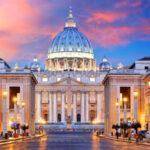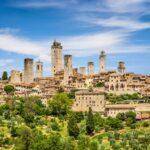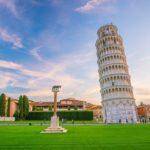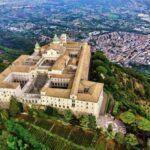Thanks to the Ravello International Music Festival (Festival Internazionale di Musica di Ravello), Ravello has become famous all over the world. Ravello is a very quiet and chic town and from the terraces of Villa Rufolo and Villa Cimbrone, visitors can admire a wonderful panorama that once enchanted Richard Wagner and the great Greta Garbo.
Ravello had very prosperous trades during the XI and XII centuries, afterwards it was included in the territory of Amalfi.
The town is like a terrace over the sea: It boasts wonderful look-outs, the so-called belvedere, as for example the one dedicated to Princess of Piemonte, from where the whole coast can be admired.
Ravello is situated on the Lattari Mounts characterized by a wonderful vegetation, on a cliff dividing the valleys of the Dragone and Reginna streams.
From a height of 350 m above the sea-level the town dominates the blue sea of the Amalfi Coast. Giovanni Boccaccio charmed by the beauties of these places described them in his work “Decameron”. The main character of one of its short stories comes from Ravello, Landolfo Rufolo: he was a nobleman who had chosen to be a pirate. He shipwrecked but found, thanks to his abilities and good luck, a great treasure.
In 1819 the famous English painter William Turner visited Italy and spent some time in Ravello. His sketches of the Amalfi Coast are now exhibited in the Tate Gallery in London. The town has a quiet, silent atmosphere that enchants all the people coming to visit it, and boasts beautiful villas which are the most famous buildings of the town: Villa Rufolo built in the XI century, with its terraces on the sea and Villa Cimbrone with its wonderful belvedere. During the XIX and XX centuries many artists, painters, musicians were inspired by the beautiful landscapes of the town, as for example Ruskin, Miró, Vedova and Escher; André Gide set in Ravello some episodes of his work “The immoralist”; Lawrence wrote there “Lady Chatterley’s Lover” and Graham Green “The third man”; Wagner imagined that the beautiful gardens of Villa Rufolo were ‘the magic garden of Klingsor’ in his masterpiece “Parsifal”. The most important monument is the Cathedral, built in the XII century.
The town was probably founded in the sixth century by Romans colonists who ventured among the mountains, a good shelter to escape the destruction of the Vandal barbarians; the first certain information about Ravello date to the ninth century, when all the towns of the Amalfi Coast are united in the state. Around the year 1000 the town was populated by a group of nobles of the Maritime Republic of Amalfi, who rebelled against the authority of the doge. The city quickly prospered, thanks to a flourishing wool spinner activity, once called “Celendra”.
In the eleventh century, the inhabitants of the town tried to break free from their bonds to Amalfi: the village was surrounded by walls and patrician families started building their sumptuous mansions, electing its own Duke. In 1086 the town also became a bishopric. With the Norman conquest, and their success in the South the decline of Ravello began, which has become part of the kingdom in 1131. In 1137 the Republic of Pisa devastated Ravello for three days: despite this, the inhabitants of the town, clever merchants, had also conquered the Arabian markets, between the twelfth and thirteenth centuries and the city reached about 36,000 inhabitants.
During the Sicilian Vespers (1282-1302) the French occupied Ravello, which redeemed itself with 135 ounces of gold. Led by Judge Giovanni Frezza, Ravello supported Ladislas of Durazzo in his struggle for the reconquest of the kingdom and occupied the town of Scala, which instead supported Louis II of Anjou. In the following centuries the town began its decline and its population reduced. In the seventeenth century the plague further weakened the town and decimated the population; in 1818 the diocese of Ravello was suppressed and aggregated to the archdiocese of Amalfi.





